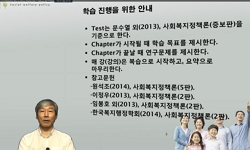The purpose of this study is to identify the consumption patterns of the households with the disabled members in Korea, depending on poverty status and household types. In addition, the factors determined by the consumption pattern were explored by ca...
http://chineseinput.net/에서 pinyin(병음)방식으로 중국어를 변환할 수 있습니다.
변환된 중국어를 복사하여 사용하시면 됩니다.
- 中文 을 입력하시려면 zhongwen을 입력하시고 space를누르시면됩니다.
- 北京 을 입력하시려면 beijing을 입력하시고 space를 누르시면 됩니다.

장애인가구의 소비패턴 특성 및 결정요인: 빈곤여부와 가구유형을 중심으로 = The Consumption Patterns of the household with the disabled members : Depending on Poverty Status and Household Type
한글로보기부가정보
다국어 초록 (Multilingual Abstract)
The purpose of this study is to identify the consumption patterns of the households with the disabled members in Korea, depending on poverty status and household types. In addition, the factors determined by the consumption pattern were explored by categorizing their patterns of households with disabled members. To this end, K-means cluster analysis and logit analysis were used. As a result, consumption patterns were classified into four groups as follows: (1) food expenditure type, (2) health care expenditure type, (3) voucher expenditure type, and (4) relationship expenditure type. If the households with the disabled members are poor, they are likely to be food expenditures. And if they are living alone, they are likely to be voucher expenditures. To date, the households with the disabled members have been regarded as low-income households and assumed to be groups with the same needs. However, just as the consumption pattern was divided into four, it can be confirmed that even the same group has different needs. Therefore, intervention of policy is required for each consumption pattern in consideration of diverse needs of households with disabled members. Especially, food expenditure type, health care expenditure type, and voucher expenditure type are more vulnerable character than relationship expenditure type.
동일학술지(권/호) 다른 논문
-
탈시설 장애인의 자립생활 실현과정에서의 사후관리 사례연구
- 한국장애인복지학회
- 차영란
- 2022
- KCI등재
-
장애인거주시설 종사자들의 중고령 발달장애인 지원 실천경험에 관한 연구
- 한국장애인복지학회
- 김현승
- 2022
- KCI등재
-
지체장애인의 주거빈곤이 외출과 우울에 미치는 영향 - 모형비교를 통한 검증 -
- 한국장애인복지학회
- 남지현
- 2022
- KCI등재
-
입원(소) 정신장애인의 회복인식 영향요인 : 60세 미만과 60세 이상 다집단 분석
- 한국장애인복지학회
- 박종은
- 2022
- KCI등재




 KCI
KCI 스콜라
스콜라






